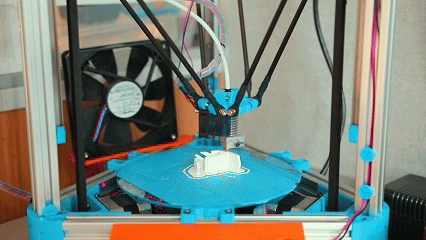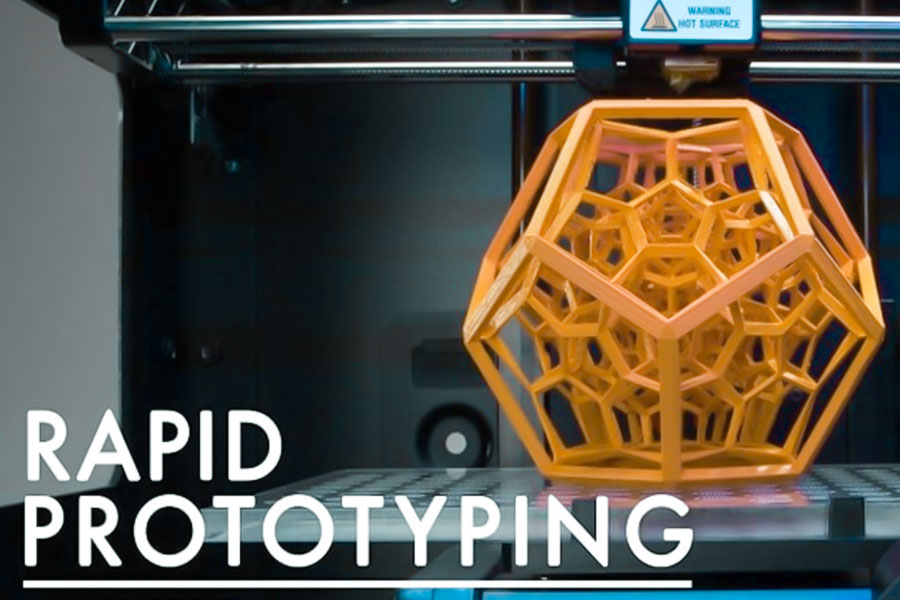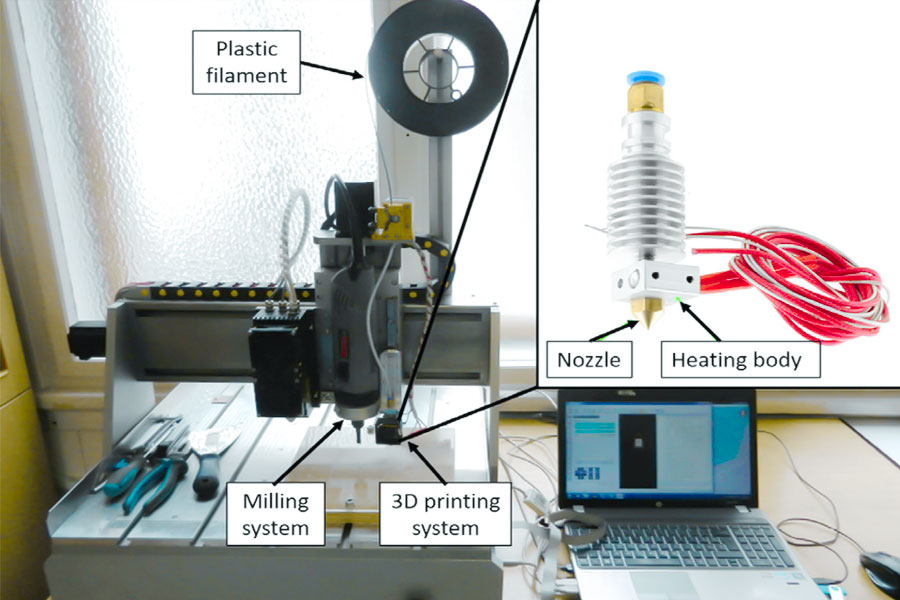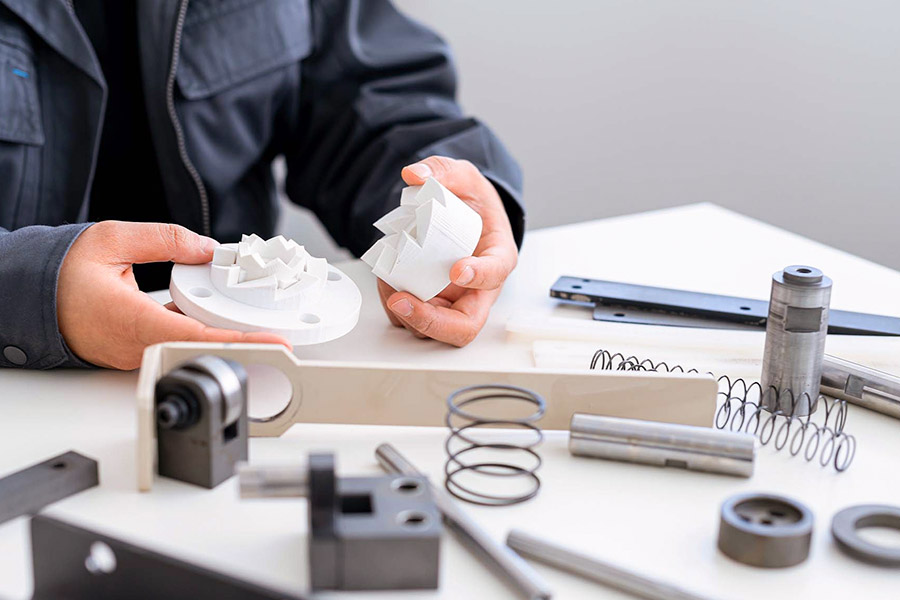Prototype design is the core of product innovation, in essence, by constructing prototyping model, abstract concepts into verifiable physical models. Prototyping meaning do not just build models, but are validated through multidimensional physics, helping the team identify design flaws, optimize functional layouts, and provide key parameters for subsequent production. In the age of smart manufacturing, SLA's diverse rapid prototyping technologies such as fine surfaces, 3D-printing composite components, and CNC machining high-strength prototypes offer targeted solutions for different industries.
As a one-stop rapid prototyping service provider, JS Manufacturing relies on full process technology integration capabilities (from concept design to small scale trial production) and a 48-hour rapid delivery system to help businesses turn ideas into competitive physical prototypes, making every prototyping model a pivot point for commercial success.

What is the core purpose of rapid prototyping?
The core purpose of rapid prototyping is to effectively create testable physical models through rapid prototyping technology, to help enterprises rapidly validate design concepts, identify potential problems, and optimize solutions in the early stages of product development. This has significantly shortened the research and development cycle, reduced resource waste, and provides critical data support for subsequent mass production. This iterative verification method not only enhances the feasibility of design, but also facilitates collaboration across sectors, ensuring a combination of functionality and market adaptability of the final product.

What are the commonly used techniques for rapid prototyping?
1.Stereoscopic Light Curing (SLA)
In the rapid prototypes, SLA technology uses ultraviolet laser light to solidify liquid resin and build high-precision models layer by layer. Suitable for inspection of complex structure and transparent parts, surface smoothness can achieve mirror effect.
2.Selective Laser Sintering (SLS)
Using laser sintering to layer nylon powder without supporting structure is the preferred method for rapid prototype function test, especially for high temperature resistance and strength industrial components molding.
3.Fused Deposition Modeling (FDM)
Through the layer of plastic wire, the cost is the lowest, the operation is convenient. It is widely used for model verification of rapid prototypes and supports a variety of common materials such as PLA and ABS.
4.Direct Metal Laser Sintering (DMLS)
For metal prototypes, DMLS technology, which uses high-energy lasers to melt metal powder and directly manufacture precision parts, is a core process for rapid prototyping in aerospace and medical implant manufacturing.
5.CNC machining
Cutting raw materials in combination with computer controlled technology is the most accurate process in rapid prototype (±0.005mm) and is suitable for complex metal or plastic industrial grade prototypes.
6.Hybrid manufacturing (3D printing+CNC)
Combining additive and subtractive technologies with rapid prototyping techniques, 3D printing is used first for rapid prototyping, then for critical dimensions, balance efficiency and accuracy of CNC precision machining.

Why is 3D printing faster than traditional methods?
Core reasons for the speed advantage of 3D printing
1.Skip mold development process and speed up the prototyping process
Traditional methods such as injection molding and die-casting require the production of molds, which can take weeks to months, while 3D printing creates layers directly from digital models without the need to mold development. JS can use an an industrial grade SLA 3D printer to complete the first prototyped in 24 hours, compared to at least 7 to10 days for traditional mold casting.
2.Automatic layered production reduces manual intervention
3D printing automatically layered materials through software, without manual equipment debugging or tool replacement, while traditional CNC machining requires manual programming, clamping and tool replacement, which lengthens production time of individual pieces. JS company's automated production line can be printed 24 hours a day without anyone, increasing efficiency by more than 50%.
3.Parallel design and rapid iteration
Traditional prototypes require a linear process of design, sampling, modification, and re-sampling, while 3D printing supports synchronous multi version testing. Once JS receives customer documentation through its cloud cloud platform it can process multiple design proposals in parallel, completing 3 to 5 prototype iterations in a week, 2 to3 times more than traditional methods.
4.Single-use molding of complex structures
For complex geometric structures such as hollowed-out grids and irregular surfaces, traditional CNC machining requires parts to be dismantled and assembled, while 3D printing can be completed as a whole. JS company's SLS technology used to produce prototype heat sinks for customers with internal flow channels. Conventional methods require 7 days to dismantle and process, while 3D printing takes only 2 days.
Differentiation advantages of 3D printing technology compared to traditional processes
| Comparing dimensions | 3D Printing Technology (JS Company) | Traditional prototyping techniques |
| Production cycle | 1-3 days (standard parts). | 7-30 days (including mold development). |
| Material adaptability | 50+materials (metal/plastic/composite). | Restricted by mold materials and processing techniques. |
| Design freedom | Support hollow, hollow, and gradient structures. | Restricted by mold materials and processing techniques. |
| Modify cost | Modifying CAD files allows for reprinting at no additional cost. | It is costly to re mold or adjust the equipment. |
| Small-batch costs | Stable cost within 50 pieces. | The cost of small-scale production significantly increases with the increase of quantity. |
| Environmentally friendly | No waste generated (materials are recyclable). | Generate scraps and mold waste. |
JS Accelerates Prototyping
- Technology integration: Combine 3D printing with CNC and post-processing automation to achieve seamless integration of rapid prototyping and precision machining. For example, prototypes of a car customer's shell are produced through 3D printing, CNC finishing and paint, with a full cycle of only 10 days, compared with 30 days for traditional methods.
- Smart quotation system: Supports uploading of uploading STEP/STL files and offers quote feedback within 24 hours, which typically requires 3-5 working days for traditional providers.
- Material library optimization: Keep a stock of hot materials (such as medical-grade ABS, wearable nylon) to reduce procurement wait times. Traditional models require special materials to be ordered 1-2 weeks in advance.

What tools are needed for rapid prototyping?
1.Hardware tools
3D printers (additive manufacturing equipment)
- Industrial grade SLA (light curing), SLS (selective laser sintering), FDM (melt deposition) equipment for rapid prototyped of complex structures or functional components. JS company, for example, can use SLA technology to complete high-precision plastic prototyping in 24 hours, compared to several days for traditional CNC.
- Metal 3D printing equipment (such as DMLS) is suitable for prototyping high-performance metal parts and shortening die development cycles.
CNC machining center
Combined with 3D printing, it can be used for rapid prototyped of high-precision metal or plastic parts, especially for situations requiring high strength or surface smoothness. JS company's automated CNC production line can reduce the traditional 7-day processing time to less than 3 days.
Laser cutting
Quick-cut sheet metal, usually used for prototype structure verification or simple shell prototyped, supports a variety of materials such as acrylic, wood and metal sheets.
2.Software Tools
CAD Modeling Software
Creating accurate 3D models, are the starting point for all prototypes. The JS company team utilizes parametric design tools quickly adjust design parameters and redesign prototypes.
Slicing software
Converts CAD models into G-code that 3D printers can recognize, optimizing printing paths and support structures, and reducing post-processing time.
Simulations and Verification Tools
ANSYS, ABAQUS and other finite element analysis software are used to simulate stress and heat before molding to avoid repeated tests and errors. The prototyped failure rate was reduced by 40% when JS discovered design defects in advance.
3.Materials and consumables
- Engineering plastics: ABS, PLA, Nylon (PA), TPU, etc., used as prototyped for lightweight or wearable components.
- Metal materials: Aluminum alloy, stainless steel, titanium alloy, etc., suitable for function verification or small batch production.
- Composite material: Carbon fiber reinforced resin, ceramic base material, meet high strength, high insulation and other special performance requirements.
JS company's material library includes more than 50 materials to ensure prototype solution meet production requirements.
4.Support services
Fast mold manufacturing
The production of small-scale prototypes (50-500 pieces) can be achieved by using short-term molds such as silicone molds and aluminum alloy molds combined with vacuum injection molding or low pressure casting, and the cycle time is reduced by 80% compared to traditional steel molds.
Automation of post processing
JS uses a combination of polishing, grinding, spraying, plating and other equipment to reduce reprocessing time to athird of conventional methods through robotic arms and automated assembly lines.
Supply Chain Collaboration Platform
Support for online uploading of design documents (STEP/STL, etc.), real-time tracking of prototyped progress and integration of global vendor resources to ensure that materials and processes match.
How does material selection affect the prototyping model effect?
Five Effects of material properties on prototype model performance
1.Structural strength and durability
- High rigidity materials (such as aluminum alloy, nylon): Prototyping model suitable for bearing pressure or dynamic loads, capable of simulating the mechanical properties of mass-produced parts. JS has previously used nylon 3D-printed drone frames and tested them on prototypes to verify their impact resistance, avoiding the risk of subsequent mass production.
- Brittle materials (such as ordinary PLA): Suitable for static display or low strength testing, but prone to fracture, should be carefully selected.
2.Surface accuracy and texture
- Photosensitive resin (SLA material): Smooth surface with clear detail, suitable for precision precision parts appearance verification or prototyping model (e.g. telephone case).
- FDM materials (such as ABS): Obvious The layering, require later polishing, but low cost, suitable for rapid structural verification.
3.Feasibility of functional verification
- Conductive materials (such as conductive ABS, copper-filled PLA): Supports electronic circuit integration testing for smart hardware prototypes.
- Transparent materials (such as transparent PETG): For optical performance verification (such as prototype car headlight), high precision 3D printing is required.
4.Balance cost and efficiency
- Low-cost materials (e.g. PLA, common resin): Shortened prototype model cycle for a single iteration, suitable for fast iteration by start-up teams.
- High-performance materials (e.g. titanium alloy, carbon fiber): Prototypes can be made more reliable but costly and are often used in harsh environments such as aerospace.
5.Environmental adaptation
- High-temperature resistant materials (such as PEEK): Suitable for prototyped testing of automotive engine compartment that must withstand high temperature environments.
- Waterproof materials (such as IP grade silicone): Used for prototyping model validation of underwater equipment or bathroom products.
Common materials and typical application scenarios
| Material type | Strength | Surface accuracy | Cost | Applicable scenarios | JS company's technological advantages |
| ABS plastic | ★★☆ | Medium | Low | Prototype of household appliances and car casings. | Supports ±0.05mm accuracy and can be dyed or electroplated. |
| Nylon (PA) | ★★★ | Rough | Centre | Functional parts, wear-resistant components. | SLS technology achieves a hollow structure with a 30% weight reduction. |
| Photosensitive resin | ★★☆ | Tall | Higher | Precision parts, medical models. | SLA equipment are layered up to 0.02mm thick and transparent components are 90% transparent. |
| Aluminum alloy | ★★★★ | Smooth | Tall | Aerospace and robot structural components. | CNC precision machining+anodizing, surface hardness increased by 50%. |
| Silicone gel | ★☆☆ | Soft | Centre | Seals, ergonomic prototypes. | Fast replication mold injection molding tool, service life up to 50 times. |
Material selection is the key variable for prototyping model success. JS company helps customers find the most optimal solution between cost, performance and speed of delivery by integrating material libraries libraries and digital processes. A prototype medical device, for example, achieved early functional validation through titanium alloy 3D printing, ultimately saving 6 months of clinical trials.

How to validate product functionality through rapid prototyping?
1.Functional module verification
- Prototyping: High-precision functional prototypes produced through 3D printing or CNC machining are used to directly test core properties such as range of motion and load capacity. The precision of ±0.1mm of an industrial robot prototype is verified by SLA technology, which ensures feasibility of mass production.
- Rapid mockup: The low-fidelity model can quickly simulate the operation process, the rapid mockup of the car center console can verify the ergonomic rationality of button layout, avoiding rework in later design.
2.Interactive Experience Testing
- Prototyping: Intelligent home control panel combines electronic components to simulate real interaction logic and embeds sensors with FDM technology to test response speed and error rate.
- Rapid mockup: Quickly build touchable models using silicone or 3D-printed shells for user focus group testing, collecting UI/UX feedback, and optimizing interaction paths.
3.Extreme environment simulation
- Prototyping: Using high-temperature resistant resin or metal 3D printing prototypes to test the durability of seals in an environment of -40°C to 150°C.
- Rapid mockup: Creating multi material composite prototypes through rapid mold injection molding, simulating the sealing verification of immersion in 1 meter underwater for 24 hours.
4.System integration verification
- Prototyping: Integrate mechanical structures, circuits, and software into functional prototypes (such as UAV flight control systems) to verify power distribution and fault self-checking logic through continuous flight testing.
- Rapid mockup: Modular fast model is used to quickly switch different sensor schemes and shorten hardware software collaborative debugging cycle.
How can JS's 20% cost savings be reflected in rapid prototyping projects?
1.Material optimization and utilization rate improvement
- Material adaptation: JS supports a wide range of material choices, such as metals, plastics, composites, and more. Customers have the flexibility to choose low-cost, adaptable materials (such as engineering plastics instead of metals) based on their prototype needs, reducing material costs.
- Accurate dosage control: Utilizing advanced processing technology and optimized production process, reduce raw material waste, ensure maximum utilization of raw materials.
2.Efficient production process accelerates turnover growth
- Quick Document Processing: Support for one-click upload of multi-format files (STEP/STL/PDF, etc.), with professional teams completing design reviews and feedback on optimization suggestions within 24 hours, reducing lead time.
- Agile production mode: Reduce manual intervention and error rates, respond quickly to prototype iterations, and shorten delivery cycles by adopting digital manufacturing technologies such as automated programming and intelligent scheduling.
3.Technology integration reduces overall costs
Combining CNC precision machining and 3D printing to efficiently process complex structural prototypes, avoiding multiple clamping or mold costs in traditional processes.
4.Collaborative effects of mass production
- Small-batch economy: JS dilutes unit costs through standardized processes and intensive production arrangements, even when prototype order are small.
- Rapid prototyping validation: Shortens customer product validation cycle, reduces the cost of repeated modifications due to design defects, and reduces overall the R&D budget.
5.Indirect cost reduction through sustainable practices
- Waste recycling: Material procurement costs can be reduced by utilizing material recycling technologies such as remelting metal shavings.
- Application of energy-saving equipment: Adopting high-efficiency machine tools and low-energy process, reducing energy cost and indirectly compressing the total project cost.
Summary
In the development of rapid prototyping, technology has broken through a single rapid size, gradually forming an intelligent ecosystem that combines design thinking with industrial realization. From SLA photopolymerization technology to conceptual prototyping with nanoscale precision, to 3D printing of metals and direct melting of mass-produced metal prototyping model, each process is redefining the boundaries of validation. It is both a tool for error correction and a catalyst for innovation.
In hybrid manufacturing, when CNC precision processing collides with 3D printing, enterprises are able to build digital twin bridges between virtual reality and reality, compressing design iteration cycle into real-time conversations with the market. The 48-hour prototype ecosystem created by JS epitomizes this shift.
Disclaimer
The content on this page is for general reference only. JS Series makes no express or implied warranties regarding the accuracy, timeliness, or applicability of the information provided. Users should not assume that the product specifications, technical parameters, performance indicators, or quality commitments of third-party suppliers are completely consistent with the content displayed on this platform. The specific design feature, material standards, and process requirements of the product should be based on the actual order agreement. It is recommended that the purchaser proactively request a formal quotation and verify product details before the transaction. For further confirmation, please contact our customer service team for professional support.
JS Team
JS is an industry leading provider of customized manufacturing services, dedicated to providing customers with high-precision and high-efficiency one-stop manufacturing solutions. With over 20 years of industry experience, we have successfully provided professional CNC machining, sheet metal manufacturing, 3D printing, injection molding, metal stamping and other services to more than 5000 enterprises, covering multiple fields such as aerospace, medical, automotive, electronics, etc.
We have a modern factory certified with ISO 9001:2015, equipped with over 100 advanced five axis machining centers to ensure that every product meets the highest quality standards. Our service network covers over 150 countries worldwide, providing 24-hour rapid response for both small-scale trial production and large-scale production, ensuring efficient progress of your project.
Choosing JS Team means choosing manufacturing partners with excellent quality, precise delivery, and trustworthiness.
For more information, please visit the official website: jsrpm.com
FAQs
1.What are the advantages of rapid prototyping?
Rapid prototyping can help with rapid iteration and product optimization, shorten development cycles, reduce costs, and effectively validate design feasibility, making it especially suitable for testing complex structures and functions.
2.Which is faster, CNC machining or 3D printing?
3D printing is faster in small-scale production because it can be layered and formed directly without the need for mold opening and complex programming. Large or high precision metal parts because of their fast cutting speed, high automation level, numerical control processing efficiency.
3.Can fast molds replace traditional molds?
Fast molds can replace traditional molds in a short period of time and are suitable for small-scale test production (e.g. 100-500 pieces), but have a short service life and low accuracy. Traditional molds are still required for mass production to ensure efficiency and consistency.
4.Does rapid prototyping require programming?
Most rapid prototyping technologies require basic programming or slicing software operations (such as 3D printing), but automation tools (such as models generated by AI) greatly reduce thresholds, allowing simple models to be built quickly without complex programming.
Resources






